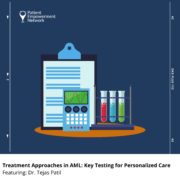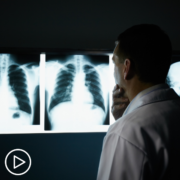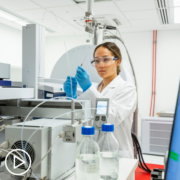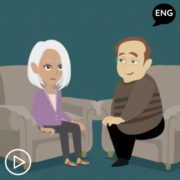How Can Lung Cancer Physician-Patient Communication Be Improved?
How Can Lung Cancer Physician-Patient Communication Be Improved? from Patient Empowerment Network on Vimeo.
Lung cancer physician-patient communication can sometimes present challenges. Experts Dr. Lyudmila Bazhenova and Dr. Jessica Bauman share factors that can create challenges and methods they’ve used to improve their communication and patient care.
See More from Lung Cancer | Empowering Providers to Empower Patients
Related Resources:

Building on Lung Cancer Successes for Targetable Oncogenic Drivers |

|

|
Transcript:
Dr. Nicole Rochester:
Can you each share some examples from your own practice around improving physician-patient communication that may serve as exemplary for providers that are watching this program? And we’ll start with you, Dr. Bazhenova.
Dr. Lyudmila Bazhenova:
I think it also has some challenges, because in the current environment of practicing medicine, we are, as physicians, we are pushed to see more patients, it’s all about productivity. So when you do that, something has to give. And a time that we can spend with the patient is limited. And I think it’s important, for myself, as a practice, I have the same, I call it spiel that I give to all my patients. It’s the same picture I write down when I speak and I give that paper to the patients. I’ve had, you know, created some preprinted things that I used to give to the patients. Don’t do it anymore. But I think that’s another thing, have some kind of information that is a patient level that I can give to the patients.
And I think we have to educate the patients as well, either by ourselves or using the platforms that we are exhibiting here, that is outside of our primary institutions. And to make sure that the patients are aware that each one of them who have a stage IV lung cancer, as well as early stage lung cancer needs to be tested for the molecular testing. And kind of put it also have the patient question the physician, did you do that? Was that test done? That’s one part of information. And I think the second part is, we do have to do better in allowing our patients to get a faster access to us. And we kind of accept the fact that we are going to be working after hours. When the clinic is over, that’s where I’m going to go to my charts, and I’m going to answer my patient’s question.
It’s kind of an intrinsic, is the work of the physician. Hours is…unfortunately, doesn’t really count. There is no limit to that. So whatever it works, like having a nurse educator. We have in our institution, we have…we call her tissue coordinator, but she’s the person who can actually make sure that the tissue is done, she can also make sure that reports are sent to the patient and make sure that patient has ability to ask questions of somebody. And I think the EMR, electronic medical record, it’s kind of a love-hate relationship, I think, with all of us. But one thing that I find it made it much easier for me is to communicate with my patients using my chart and this ability to release the result to the patient by one click of a button, that saves time for me so I can spend that time to actually visit the patient and explain to the patient what needs to be done.
Dr. Nicole Rochster:
That is awesome, thank you. Do you have anything to add, Dr. Bauman?
Dr. Jessica Bauman:
Yes, yes, I agree that I think that this overall requires a lot of education, and especially when patients come in and they want to know tomorrow or yesterday, actually, what they’re going to get for treatment and what we’re going to start with. And so telling them that actually we still can’t decide for at least another week or two, that in of itself can be challenging. I think the other piece of this that’s always important is, in general, when we’re doing molecular and biomarker testing, we’re looking for changes in the tumor, we’re looking for what we call somatic mutations, but there is also the second concern where on rare occasion, issues with molecular testing can bring up issues with germline testing, meaning some abnormality that’s found that may impact their own familial risk for cancer, and so that of course requires a lot of thought and careful education as well, in addition to the treatment decision-making that we’re really ordering the test to decide upon.










